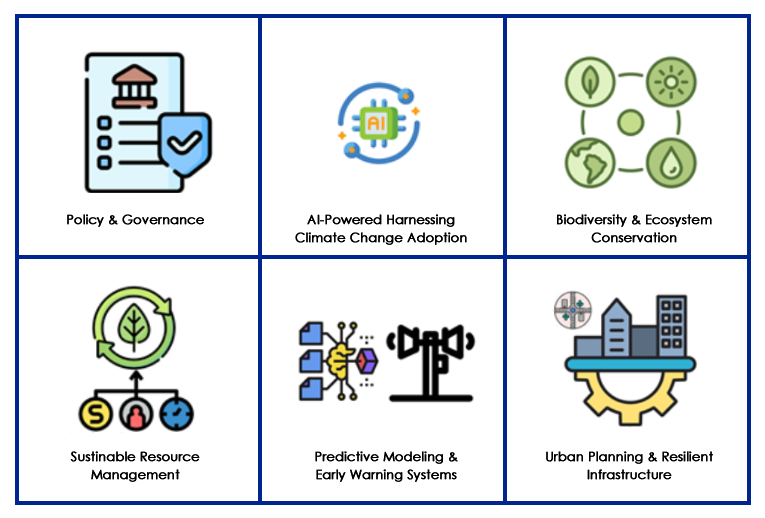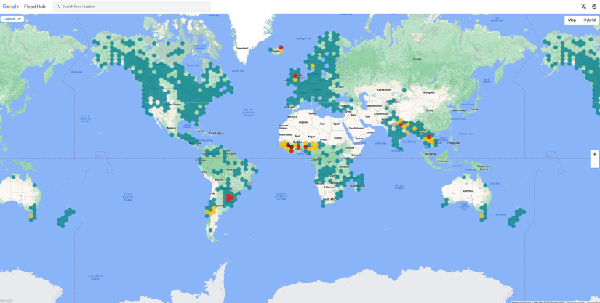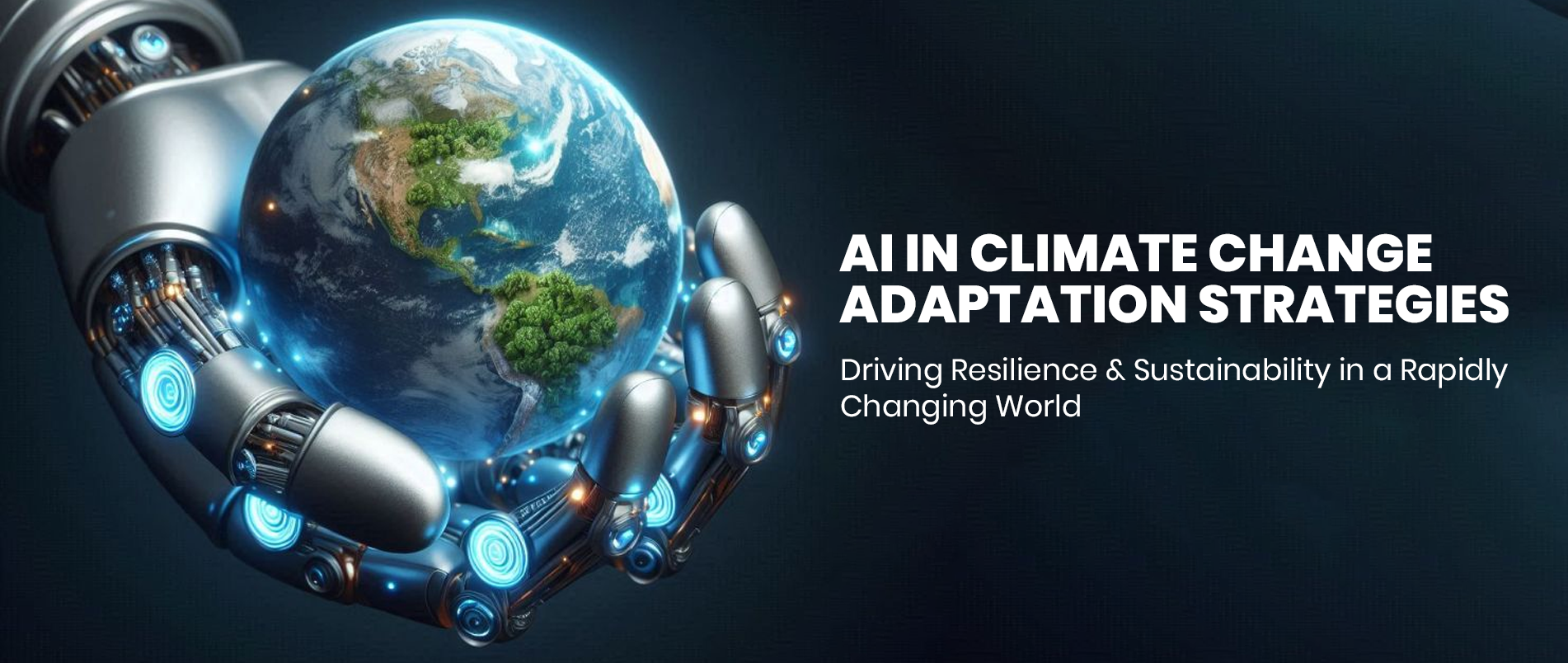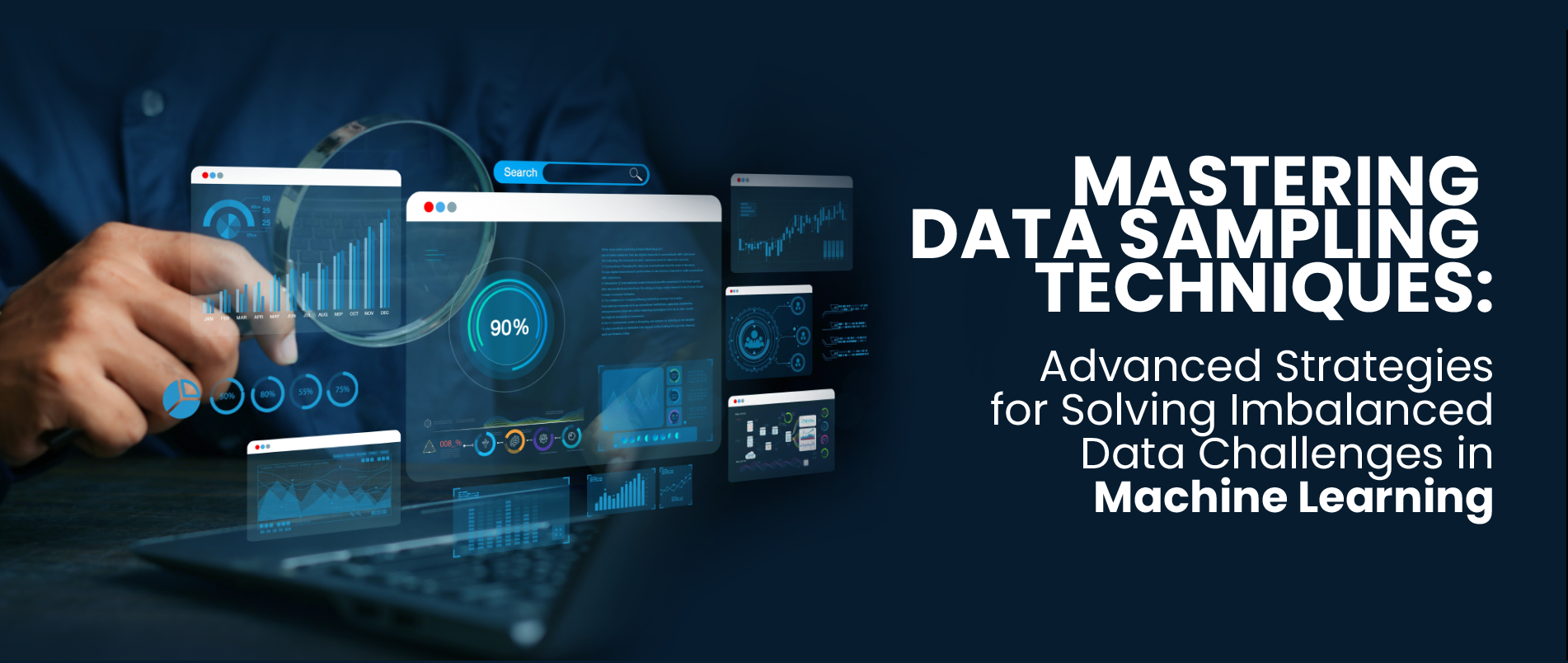Introduction
There are multiple challenges in this world, which are specific to the country, region, zone, etc., but the common challenge across the globe is “Climate Change”. I hope everyone agrees with this. Climate change was once a distant concern, but today, its impacts, from rising sea levels to extreme weather events, are happening across different geographies and are experiencing extreme hot weather, intense storms and floods, which are a reality affecting communities, economies, and ecosystems worldwide for the following essential areas such as Water, Energy, and Agriculture.
Because this stands out as the most significant challenge in the present situation, all developed and developing countries are looking into finding the necessary innovative strategies to adapt and build resilience to control the rapidly changing climate and threatening various factors such as agriculture and economic conditions for the country.
However, with recurring droughts, floods, and ecosystem disruptions happening now across the globe, climate change requires critical adaptation.
Adaptation strategies should equip all societies to thrive despite unavoidable environmental changes. While mitigation focuses on reducing emissions, adaptation ensures resilience, adjusting systems and restructuring to live with the evolving climate reality.
This article explores how AI powers real-world applications, creating actionable climate adaptation strategies and driving strength and sustainability.
AI's Role in Climate Change Adaptation
Artificial Intelligence (AI) also plays a pivotal role in this domain, enabling smarter, faster, and more efficient strategies through data-driven decision-making, predictive modelling, and optimised resource management.
AI is changing the world in many ways. It’s also revolutionising climate change adaptation by enabling smarter, faster, and more efficient responses to environmental challenges by leveraging vast datasets, advanced algorithms, and predictive analytics. This is followed by AI providing actionable insights that help mitigate climate risks, enhance resilience, and promote sustainability. Below are key areas where AI is driving progress in climate change adaptation.

Figure 1: Climate Change Adaptation
AI enhances our ability to understand and respond to climate change by analysing vast amounts of data, identifying patterns, and predicting future scenarios. These capabilities are crucial for developing effective adaptation strategies.
Predictive Modelling
Climate change adaptation predictive modelling is one of the key applications of AI. Since we have vast historical data, AI algorithms can access it and use current trends to forecast future conditions. This helps to anticipate climate change and prepare accordingly; ultimately, policymakers and planners can act on this.
For example, AI can predict the possibility of extreme weather events, such as extreme hot weather, hurricanes, and floods, allowing communities to take proactive measures to mitigate their impacts well in advance.
Strategic AI-Driven Adaptation
Predictive Modelling and Early Warning Systems: Thanks to a massive volume of historical data, AI-powered tools can predict early warning systems by analysing climate, meteorological, and environmental conditions, and predicting natural disasters like floods, hurricanes, and droughts well in advance.
Google's Flood Forecasting Initiative: Let's discuss how Google's Flood Forecasting Initiative solves the problem.
Problem it Solves: Floods are the most destructive natural disasters globally, affecting millions each year. We have experienced that traditional flood warning systems often provide late alerts or inaccurate forecasts due to the high disruption of economies, huge property losses, and many lives lost. This was particularly true in South Asia and Africa, as shown in the statistical evidence.
How AI Enables Forecasting
Google's Flood Forecasting uses Machine Learning and AI techniques to solve these challenges by:
- Data Integration: It ingests large volumes of diverse data sources, including historical flood patterns, weather forecasts, satellite imagery, reservoir water levels, and landscape maps.
- Hydrological Modelling: AI models can simulate how rivers and rainfall will behave, predicting where floods are likely to happen and their severity level. This modelling is called AI-powered “Hydrological Modelling”.
- High-Resolution Maps: Machine Learning and Deep Learning can enhance flood maps to high granularity and clarity, sometimes down to a few metres, making alerts extremely localised and actionable insights. It can take it one step further and recommend action items.
- Real-Time Updates: The AI-powered system can dynamically update flood forecasts based on new weather and hydrological data, ensuring timely and accurate information.
- Communication Platforms: Forecasts are integrated with Google Maps, Search, and Android Alerts to reach people in at-risk areas instantly.
In short, AI doesn't just predict; it constantly learns and adapts its forecasts as conditions evolve. This is not only applicable to climate control but also to other domains.
Strategic Impact: After implementing this system, the following are the impacts on society.
- Reduced Loss of Life: Early warnings have given people time to evacuate from the location, allowing them to secure their property and significantly decreasing casualties.
- Disaster Preparedness: Ultimately, it improves disaster response efficiency, so governments and NGOS can mobilise resources earlier before the disaster hits a specific area based on the system's advice.
- Insurance Planning: The system helps insurance companies make predictions based on historical data and assess risk appropriately regarding potential risk level, pricing, and claims management.
- Infrastructure Protection: The system helps local municipalities and urban planners assess various risk factors and design or modify infrastructure.
- Economic Resilience: Of course, the system helps farmers and businesses that are relevant and dependent on agriculture, and households’ needs are well planned for in the event of forthcoming floods, reducing economic disruption.
- Key achievement: According to Google, their flood prediction accuracy increased by 20-30% compared to traditional models.
Real-World Examples or Case Studies: Let's review a few real-world examples.
- India and Bangladesh Rollout:
- In 2018, Google began piloting flood forecasts in the Patna region of India by assessing historical data and predicting floods in the upcoming monsoon season.
- By 2021, they had expanded across India and Bangladesh.
- During the 2020 monsoon season, a significant milestone and progress was made as the system sent around 30 million flood alerts to people across different regions.
- User Interface: The user interface is easy to understand. Warning details, including flood depth predictions and risk maps, are displayed directly on Google Maps or smartphones.

Figure 2: Flood Hub currently covers river basins in over 80 countries worldwide, providing critical flood forecasting for over 1800 sites and covering a population of 460 million people.
Resource Management
Effective resource management involves manufacturing products and is essential for sustainable adaptation to climate change. Of Course! AI can optimise natural resources such as water, energy, and agriculture. We have vast statistical data on these resources; we can analyse them by collecting them from various sources and feeding them into an AI-powered system. The system can recommend efficient irrigation practices, building energy usage patterns, and innovative crop management techniques. Obviously, this would reduce waste and enhance productivity.
Sustainable Resource Management (Water, Energy, Agriculture)
AI-powered systems will ensure sustainable management of critical resources by optimising usage, reducing wastage, and planning for future demand. Let’s discuss them quickly.
As we know, Sustainable Resource Management uses natural resources such as water, energy, and raw materials efficiently and responsibly to meet current needs while preserving them for future generations. It involves minimising waste, reducing environmental impact, and balancing economic, social, and ecological goals to ensure ecosystems' long-term sustainability and resilience; critical resources like water, energy, and agricultural inputs ensure their sustainable use.
Of Course! AI can optimise and enhance efficiency, precision, and decision-making through advanced analytics, automation processes, and historical data. We can demonstrate the following exercises to achieve the abovementioned goal using AI-powered tools.
- Resource Optimisation: AI analyses data from IoT sensors to monitor resource usage, detect inefficiencies, and recommend optimal allocation strategies, reducing waste and costs.
- Predictive Analytics: Machine learning models forecast resource demands, such as water and energy needs, allowing for proactive planning and conservation.
- Automation: AI automates resource-intensive processes, such as irrigation in agriculture or energy distribution in grids, ensuring optimal usage without manual intervention.
- Waste Reduction: AI-driven systems identify patterns in resource consumption and provide insights to minimise wastage in industries and households.
- Monitoring and Compliance: AI monitors environmental impacts, ensuring adherence to sustainability goals and regulations through real-time data analysis and reporting.
Specifically, AI enhances efficiency, conservation, and decision-making through data-driven approaches in water management. Here’s how AI contributes to sustainable water management:

Figure 3: AI for Sustainable Resource Management
Let's explore how an AI-powered smart water management implementation
Smart Water Management (SWM) involves analysing and monitoring water system usage. It is an intelligent methodology that analyses and controls water systems using AI, IoT, and data analytics technologies. It enables real-time tracking of water quality, usage patterns, and water leak detection across urban, industrial, and agricultural environments.
AI models can forecast water demand and optimise supply, effectively improving conservation and reducing operational costs. They also support precision irrigation, efficient wastewater treatment and management, and proactive infrastructure maintenance. The primary goal is to ensure sustainable, strong, and equitable water resource management in the face of climate challenges.
Implementing Smart Water Management involves a systematic, technology-driven approach.
- Assess Water Systems and Set Goals: This is the foremost step in setting up a smart water management system. In terms of conservation, real-time monitoring, predictive maintenance, or demand management
- Audit the existing water infrastructure to understand its current status. This includes the water resource supply and consumption, and how the distribution and treatment systems work in the existing system, either zone-wise or district-wise.
- Identify key issues such as leakages, inefficiencies, and poor water quality from the selected or identified locations (it could be at the zone or district level)
- Deploy IoT Sensors and Smart Meters. In stage two, we must install IoT devices and smart meters across pipelines, reservoirs, treatment plants, and agricultural fields to understand consumption and supply. Other key parameters include flow rate, pressure, water quality (pH, contaminants), and usage with quality sensors.
- Implement Automation and Smart Controls as additional enhancements using AI-based automated valves, pumps, and treatment controls to adjust operations dynamically.
- Integrate AI and Data Analytics Platforms: Once the IoT sensors are installed, the system sends the data, which must be collected and stored in the cloud or edge computing systems.
- AI algorithms in action: Once sufficient data is collected, the trained AI system can predict water demand and detect anomalies like leaks or contamination, which can be used to optimise irrigation schedules and treatment processes.
- Build a Real-Time Monitoring Dashboard: Based on the data collected, we can build a real-time monitoring dashboard for authorities, industries, or farmers to visualise data in an understandable format. All these data points exhibit the leaks, consumption rate, contamination percentage, or maintenance needs recommendations.
- Community Engagement and Policy Alignment: We must educate consumers and industries on smart water management and its usage through apps or portals, and work with local authorities to regularise the policies.
- Maintenance and Continuous Improvement: To ensure sustainability, we must monitor and maintain the system and regularly update IoT sensors and AI models based on new environmental data.

Figure 4: AI-powered SWM
We can automate irrigation, reservoir management, and water recycling based on AI predictions.
Recommended Technologies:
| Layer | Technology Examples |
|---|---|
| IoT Devices | Smart flow metres and quality sensors (Libelium, ABB) |
| Connectivity | LPWAN (LoRaWAN), 5G, Wi-Fi |
| Data Management | Azure IoT Hub and AWS IoT Core |
| AI Models | Predictive Analytics (TensorFlow, PyTorch) |
| Visualisation | Power BI, Grafana, custom apps |
| Automation | SCADA systems, smart controllers |
Urban Planning and Resilient Infrastructure (UPRI)
UPRI designs cities to tolerate change, disasters, and rapid urbanisation. It integrates innovative technologies, green spaces, and adaptive infrastructure to enhance sustainability. It emphasises flood-resistant drainage, earthquake-proof buildings, and efficient public transport.
Data-driven planning always ensures resource optimisation and long-term urban resilience. The primary goal is to create liveable, eco-friendly cities that can adapt to and withstand future challenges.
It transforms city development and infrastructure management through intelligent, data-driven solutions. Here's how AI contributes:

Figure 5: AI in Urban Planning and Resilient Infrastructure
- Predictive Modelling: AI analyses climate data, population growth, and urban trends to predict future challenges, guiding sustainable city planning and infrastructure design. It uses sensors and drones to monitor the health of infrastructure like bridges, roads, and buildings, enabling timely maintenance and preventing failures.
- Disaster Preparedness: AI forecasts risk such as floods, earthquakes, or heatwaves, supporting resilient infrastructure designs and early warning systems. AI identifies areas suitable for green spaces, urban forests, and renewable energy installations, enhancing urban resilience and reducing environmental impact.
- Energy Efficiency: AI manages urban energy grids by predicting demand, optimising distribution, and integrating renewable energy sources. AI models assess land usage patterns and environmental data to suggest the most effective and sustainable urban layouts.
- Public Service Optimisation: AI supports efficiently placing essential services like hospitals, schools, and emergency facilities based on demographic and geographic data. AI optimises traffic flow by analysing real-time data, reducing congestion, emissions, and travel times in urban areas.
By incorporating AI, urban planning and resilient infrastructure development become more adaptive, efficient, and capable of addressing modern and future urban challenges.
Challenges
- Data Limitations: Gaps in climate data, especially in developing regions, hinder the accuracy of AI models. The need for high-quality, real-time data remains a bottleneck.
- Ethical Concerns: Potential biases in AI models could lead to inequitable resource allocation and concerns over data privacy and surveillance in AI-driven systems.
- Technical and Financial Barriers: High AI infrastructure and expertise costs limit accessibility. Scaling AI solutions across diverse ecosystems presents technical challenges.
- Regulatory Frameworks: There are no standardised regulations for AI deployment in climate adaptation, and there is uncertainty about accountability for AI-driven decisions.
AI Implementation for Urban Planning & Resilient Infrastructure (UPRI)
Urban Data Collection & Integration: For this activity, the sources include satellite imagery, traffic data, building sensor data, population density maps, environmental data, and socio-economic indicators. Collected data must be stored in the cloud or an edge computing system. Tools: GIS systems, IoT devices, drones and Lidar.
Smart Planning Tools: We must enable “Digital Twins,” such as AI-enhanced simulations of cities, to test infrastructure performance under future scenarios like floods and rapid urbanisation. For this purpose, AI proposes optimal layouts for buildings and streets that consider sunlight, ventilation, disaster risk, and walkability with digital twin support.
Automation & Real-Time Decision-Making: The setup helps with dynamic traffic management, real-time traffic lights, and adjusting public transport routes. It also provides automatic alerts for road repairs, pipe leaks, or power failures using AI anomaly detection. AI uses reinforcement learning to design adaptive building structures suited for climate risks. AI chatbots for citizen feedback, participatory planning apps for further development.
Recommended Technologies:
- GIS + AI: Esri ArcGIS with AI plugins
- Urban Digital Twins: CityZenith and Siemens
- AI Frameworks: TensorFlow, IBM Watson IoT, Azure Maps
- Drones & Computer Vision: DJI + YOLO/Detectron2 for infrastructure scanning

Figure 6: AI-Powered UPRI
Biodiversity Conservation
Biodiversity Conservation with AI involves using artificial intelligence to monitor, analyse, and protect species and ecosystems threatened by climate change, habitat loss, and human activity. The following figure illustrates the key applications of AI-powered Biodiversity Conservation.

Figure 7: AI-powered Biodiversity Conservation
AI plays a pivotal role in biodiversity conservation through various targeted applications. Let’s discuss briefly.
Species Monitoring: AI uses computer vision and deep learning technologies to automatically identify animals from images, videos, and sound recordings collected via camera traps, drones, or acoustic sensors. This helps us monitor animal activities and automatically identify and track them, reducing the need for regular manual observation.
- Example: WWF’s snow leopard tracking uses AI to detect the animal’s presence in remote, mountainous terrain.
Habitat mapping leverages satellite imagery and AI-powered techniques to detect deforestation, land degradation, and ecosystem degradation over time. Real-time observations help pinpoint where habitat destruction is occurring.
- Example: Global Forest Watch uses AI to monitor real-time tree cover loss.
Poaching Detection: AI processes sensor and camera data at protected wildlife sites to detect patterns of illegal human activity, such as armed movement or unauthorised entry into the deep forest. In the area of poaching detection, AI analyses real-time data from sensors and surveillance cameras to flag suspicious human activity in protected areas, allowing authorities to respond quicker.
- Example: TrailGuard AI camera systems deployed in Africa detect poachers before harm is done
Invasive Species Tracking: AI-powered applications can classify species from photos and environmental samples to distinguish invasive plants, animals, or immovable objects from native ones. This helps in early detection, leading to quicker control or eradication measures before ecological damage spreads.
- Example: Mobile apps like iNaturalist use AI to help citizen scientists identify invasive species.
Conclusion
We discussed how climate change is no longer a distant concern; it’s a global crisis impacting water, agriculture, energy, and ecosystems. As extreme weather events become more frequent, adaptation strategies must be prioritised alongside mitigation.
Understood how Artificial Intelligence (AI) enables faster, data-driven climate responses across sectors. For instance, Google’s Flood Forecasting Initiative shows how AI can provide life-saving early warnings. AI also enhances resource efficiency by forecasting demand, reducing waste, and optimising energy, water, and agriculture systems.
We explored how Smart Water Management leverages AI and IoT for real-time monitoring and sustainable distribution. AI supports predictive urban planning, resilient infrastructure, and efficient public services in cities. It helps build disaster-ready, adaptive urban environments. AI further supports biodiversity conservation through automated species tracking, habitat analysis, and poaching detection. These applications highlight AI’s transformative power in creating a sustainable, climate-resilient future.










